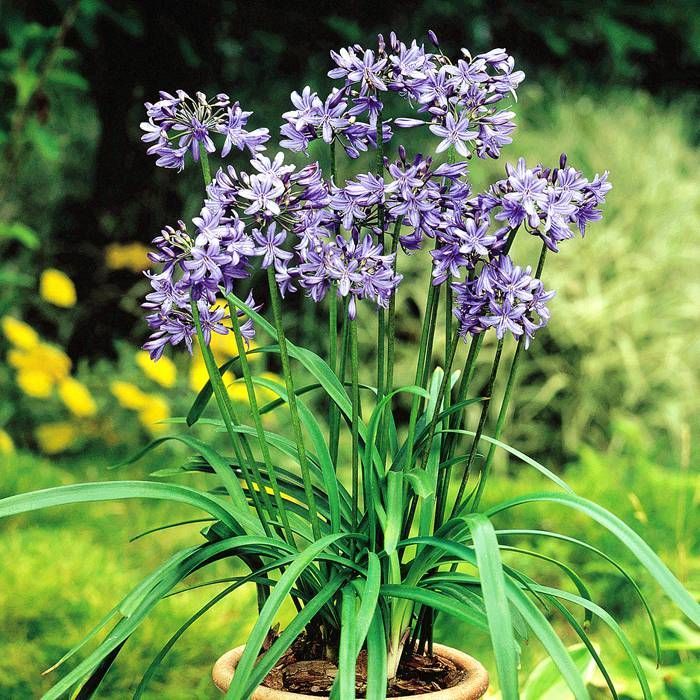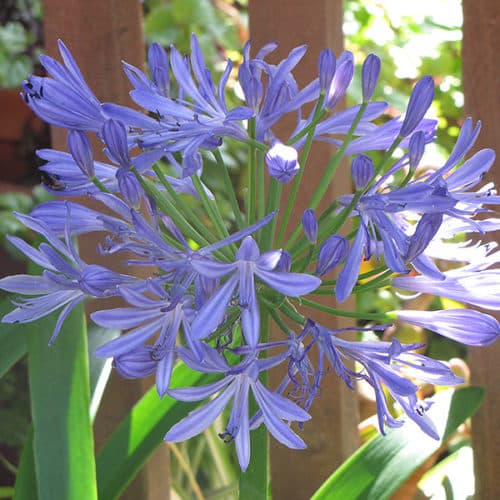Unleashing the Secret to Successful Agapanthus Growing: Idea for a Flourishing Yard
In the world of horticulture, growing agapanthus successfully needs a strategic technique that encompasses numerous aspects of plant treatment. By understanding the subtleties of agapanthus cultivation, one can develop an atmosphere where these plants flourish and bloom abundantly.
Planting Agapanthus: Finest Practices
When planting Agapanthus, correct dirt prep work is vital for guaranteeing effective development and advancement of these stunning blossoms. Agapanthus, commonly understood as Lily of the Nile or African lily, grows in well-draining soil with a slightly acidic to neutral pH level - Agapanthus. Prior to planting, it is essential to change hefty clay soils with natural matter such as garden compost or peat moss to enhance drainage and give vital nutrients for the plants
To grow Agapanthus, pick a location that gets complete sunlight to partial shade, as this will certainly advertise healthy development and bountiful blooming. Dig an opening two times the size of the plant's root ball and put the Agapanthus at the same deepness it was formerly growing. Gently backfill the opening with soil, pushing down firmly to remove any kind of air pockets around the roots.
Water the recently planted Agapanthus thoroughly and remain to keep the dirt equally damp, particularly during the plant's active growing period. Agapanthus. Applying a well balanced fertilizer once a month can even more sustain the plant's growth and blooming. By adhering to these ideal techniques for planting Agapanthus, you can develop a spectacular screen of these exciting blossoms in your garden
Suitable Dirt Issues for Agapanthus
For ideal growth and growing success of Agapanthus plants, guaranteeing the dirt conditions are suitable is critical. Agapanthus flourishes in well-draining soil with a somewhat acidic to neutral pH level ranging from 6.0 to 7.0. This type of soil permits ample water drain, protecting against waterlogging which can lead to root rot. To improve soil water drainage, take into consideration adding raw material such as compost or peat moss when preparing the growing website. Moreover, Agapanthus favors dirt that is abundant in nutrients, so incorporating a balanced fertilizer during the growing period can advertise healthy and balanced growth and vivid blossoms.

Watering and Feeding Tips
To ensure healthy and balanced development and dynamic blossoms, appropriate watering and fertilizing methods are crucial for successful Agapanthus growing. Agapanthus plants gain from normal watering, especially throughout the expanding season. It is recommended to water deeply as soon as a week, guaranteeing the dirt is wet but not waterlogged. Throughout warm weather or in pots, more regular watering may be needed to prevent the dirt from drying totally.
When it comes to feeding Agapanthus, a balanced plant food with equivalent components nitrogen, phosphorus, and potassium can be used in the springtime to promote healthy development and blooming. Slow-release plant foods are perfect for offering nutrients progressively over an extended period. Prevent over-fertilizing, as this can cause too much vegetation development at the cost of flowers.
Additionally, integrating raw material like garden compost right into the soil can enhance nutrient degrees and improve soil framework, helping in the total health and wellness of the Agapanthus plants. By complying with these watering and feeding tips, garden enthusiasts can guarantee their Agapanthus plants prosper and generate stunning display screens of blossoms.
Trimming and Deadheading Methods
Appropriate trimming and deadheading strategies play an essential function in preserving the health and wellness and aesthetics of Agapanthus plants, enhancing the necessary methods of you could try these out watering and fertilizing for effective farming. Pruning Agapanthus includes getting rid of spent blossom heads, yellowing or dead fallen leaves, and general Full Report shaping of the plant to advertise much better growth. Deadheading, the process of getting rid of discolored flowers, not only improves the plant's look but likewise urges further flowering.
When deadheading Agapanthus, it is advisable to trim off the blossom stem at the base utilizing sharp, tidy shears. This process reroutes the plant's power from seed production back right into root and vegetation development, advertising a much healthier and more robust plant. Normal deadheading can prolong the growing duration of Agapanthus and protect against self-seeding, which can result in overcrowding.
In terms of pruning, Agapanthus generally gain from a light trim after blossoming to clean the plant and encourage fresh growth. Cutting down the spent flower stems and eliminating any kind of dead or broken vegetation helps keep the plant's vigor and general appearance. Nonetheless, it is essential to stay clear of reducing right into the crown of the plant, as this can damage its wellness.

Protecting Agapanthus From Pests and Diseases
Applying reliable bug and disease administration approaches is important to protecting the health and wellness and vitality of Agapanthus plants in farming. One common insect that impacts Agapanthus is the Agapanthus borer, a caterpillar that tunnels right into the plant, causing damages to the blossoms and fallen leaves.
In enhancement to parasites, Agapanthus are susceptible to diseases such as root rot and fungal fallen leave places. By staying attentive and resolving insect and condition issues immediately, garden enthusiasts can aid their Agapanthus flourish and prosper.

Conclusion
Finally, effective cultivation of agapanthus needs appropriate growing strategies, optimal soil problems, ample watering and fertilizing, routine trimming and deadheading, and security from diseases and bugs. By complying with these techniques and pointers, gardeners can make certain a prospering garden full of stunning agapanthus blossoms. Agapanthus. Bear in mind to maintain constant care and focus to detail to advertise the health and longevity of these stunning plants
When planting Agapanthus, correct dirt preparation is necessary for making sure effective development and development of these attractive flowers.Water the newly planted Agapanthus thoroughly and proceed to keep the soil Get More Info uniformly wet, specifically during the plant's energetic growing season.For ideal development and flowering success of Agapanthus plants, guaranteeing the dirt problems are optimal is crucial. When hair transplanting or growing Agapanthus, ensure the dirt is well-prepared to provide the needed structure for the plants to establish themselves efficiently. One common insect that influences Agapanthus is the Agapanthus borer, a caterpillar that passages right into the plant, causing damage to the fallen leaves and flowers.